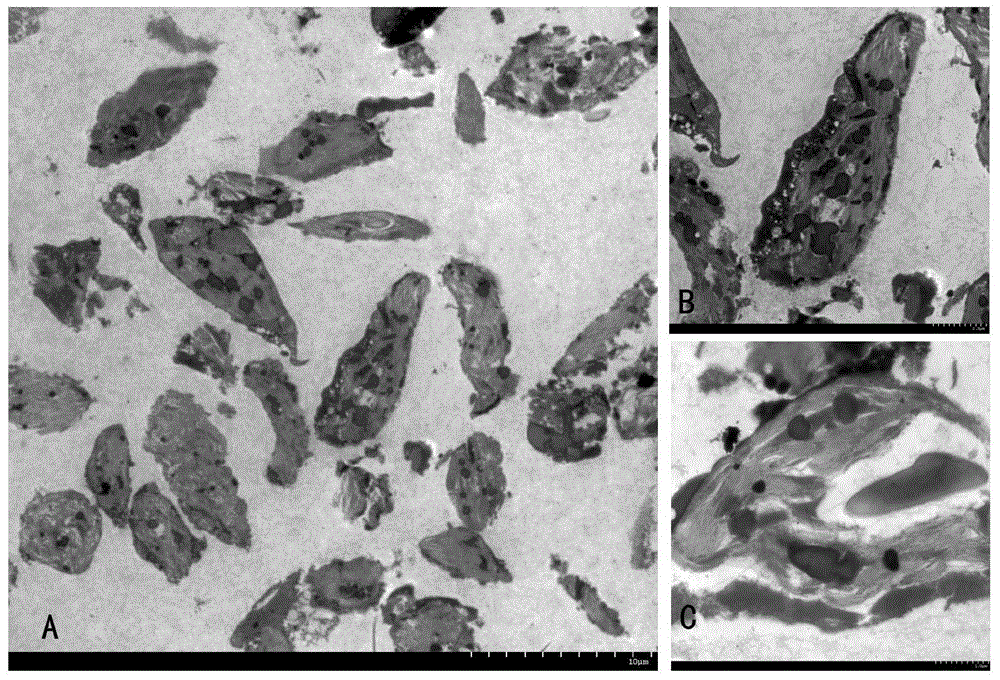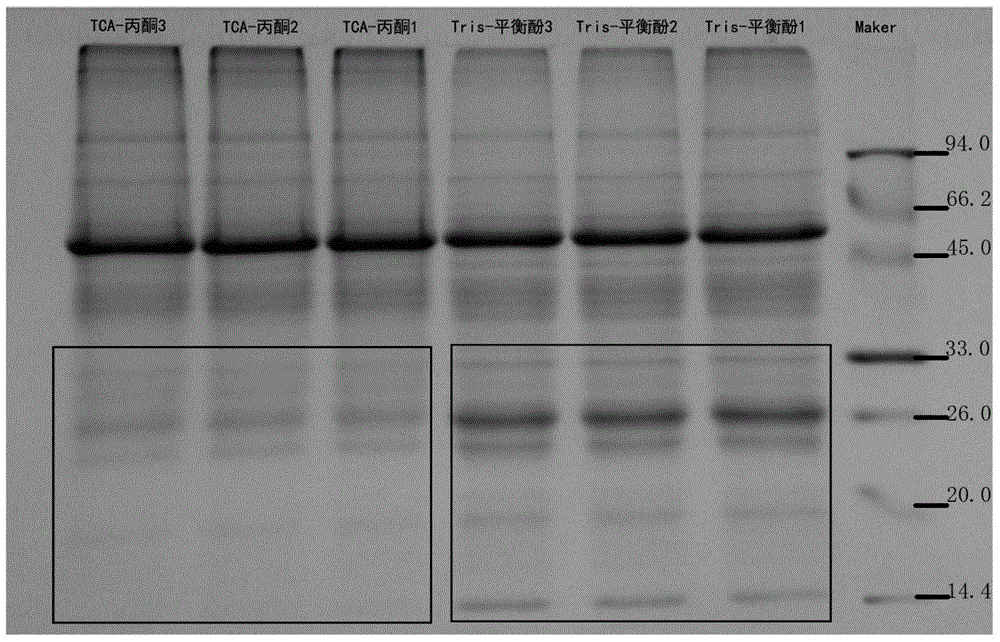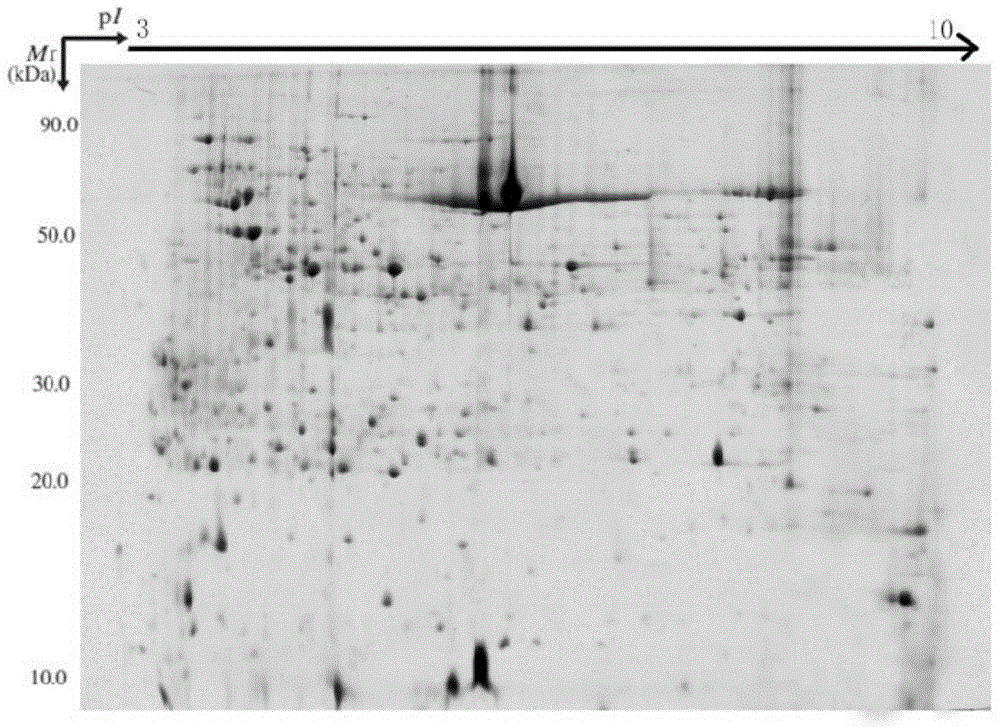Extraction method of ginkgo leaf chloroplast protein
A technology of Ginkgo biloba leaves and extraction methods, applied in the field of biochemistry, can solve the problems that the efficiency and quality of chloroplast protein extraction are not enough to meet proteomics, the preparation of chloroplast protein samples of Ginkgo biloba leaves is difficult, and the resolubility of protein powder is poor, etc., to achieve focus The effect of good condition, smooth and clear appearance, and little effect of streaks
- Summary
- Abstract
- Description
- Claims
- Application Information
AI Technical Summary
Problems solved by technology
Method used
Image
Examples
Embodiment Construction
[0031] 1. Materials and methods
[0032] 1.1 Materials
[0033] Ginkgo biloba leaves, collected from the campus of Nanjing Forestry University, Nanjing, Jiangsu Province
[0034] 1.2 Extraction solution and medium
[0035] (1) Chloroplast extraction buffer: 0.3M sorbitol, 1mM MgCl2, 50mM HEPES / KOH (pH 7.8), 2mM EDTA, 0.04% mercaptoethanol, 0.1% PVP.
[0036] (2) Chloroplast isolation buffer: 0.3M sorbitol, 1mM MgCl2, 50mM HEPES / KOH (pH 7.8), 2mM EDTA.
[0037] (3) Percoll density gradient solution: Prepare 80% and 40% Percoll with chloroplast separation buffer respectively, and add 2.5ml 80% and 5ml 40% Percoll in sequence from top to bottom in a 15ml centrifuge to form a secondary density gradient separation solution .
[0038] (4) Protein extraction buffer: 100mM Tris, 100mM EDTA, 50mM borax, 50mM vitamin C, 1% Triton X-100, 2% mercaptoethanol, 30% sucrose.
[0039] (5) Sample treatment solution I (10ml): 2g TCA (trichloroacetic acid), 0.02g DTT, dissolved with acetone ...
PUM
 Login to View More
Login to View More Abstract
Description
Claims
Application Information
 Login to View More
Login to View More - R&D
- Intellectual Property
- Life Sciences
- Materials
- Tech Scout
- Unparalleled Data Quality
- Higher Quality Content
- 60% Fewer Hallucinations
Browse by: Latest US Patents, China's latest patents, Technical Efficacy Thesaurus, Application Domain, Technology Topic, Popular Technical Reports.
© 2025 PatSnap. All rights reserved.Legal|Privacy policy|Modern Slavery Act Transparency Statement|Sitemap|About US| Contact US: help@patsnap.com



